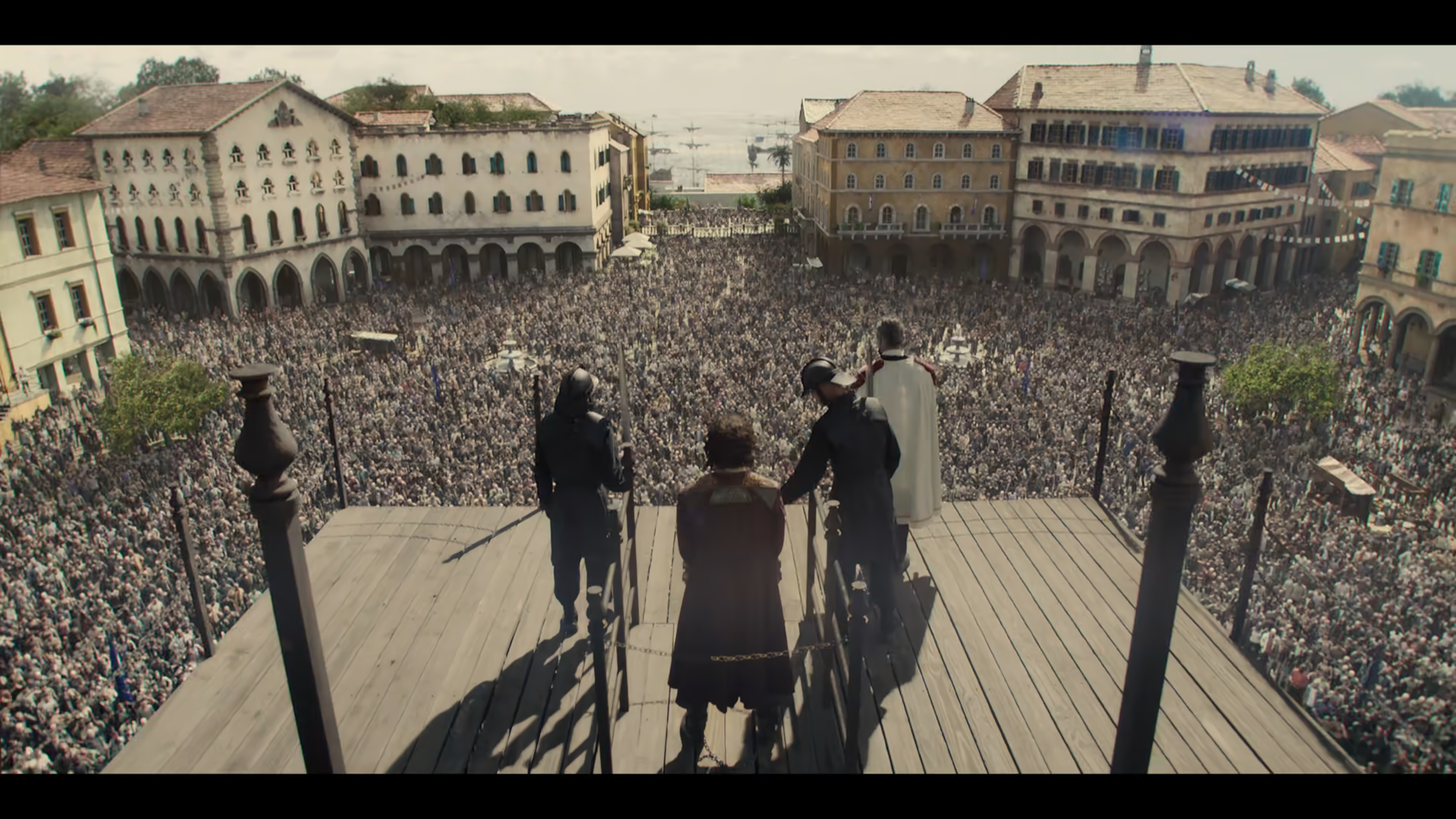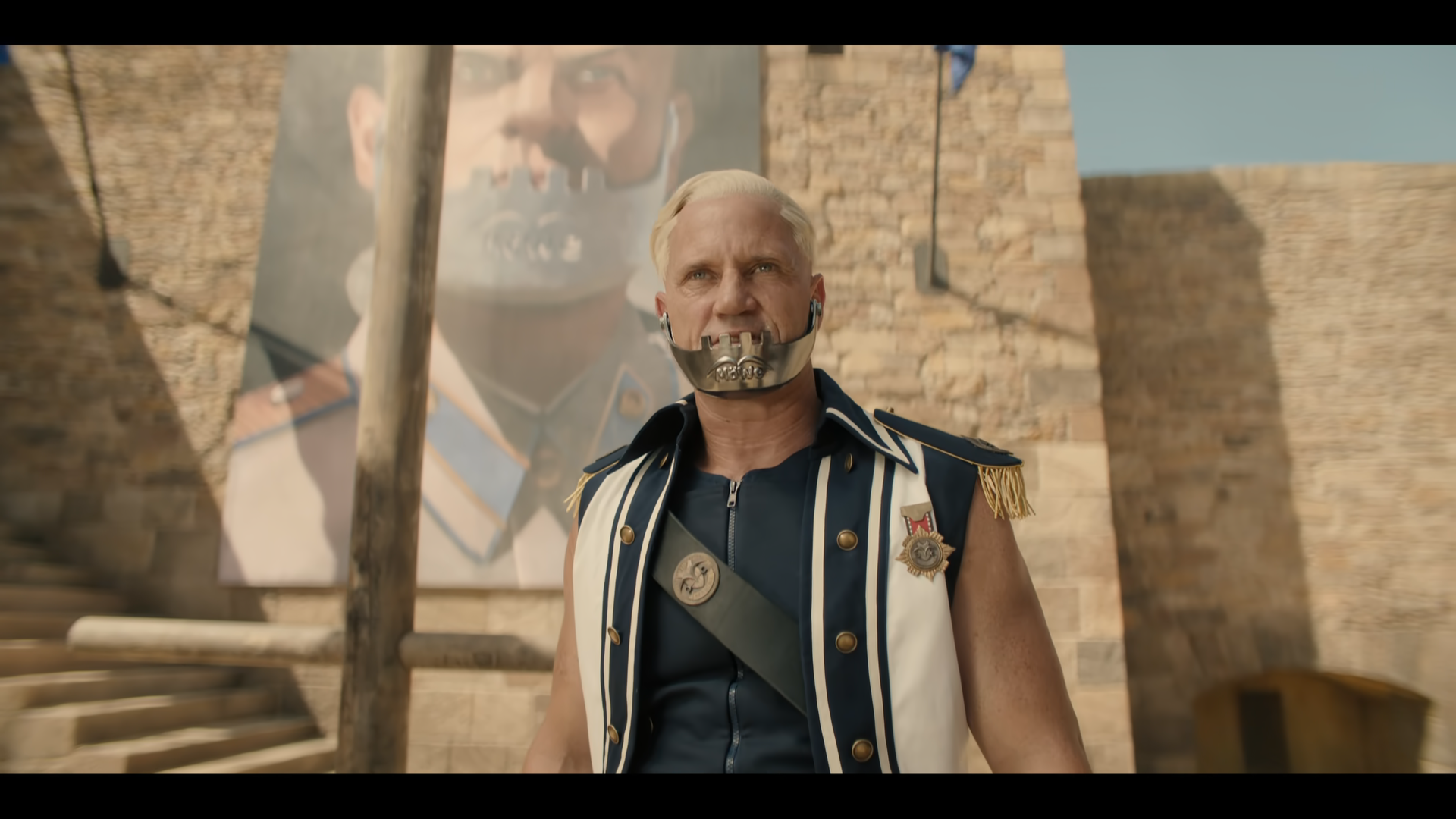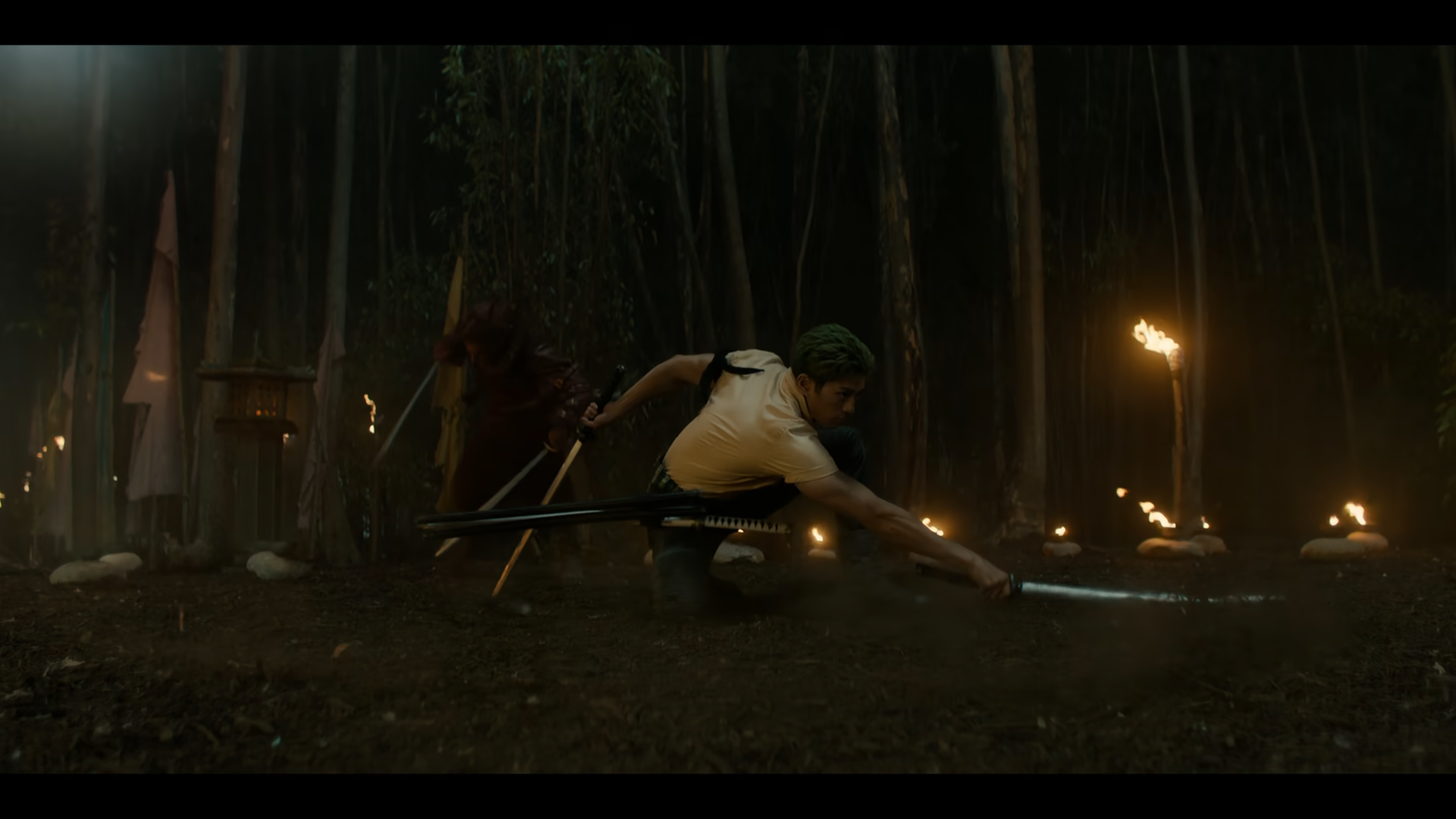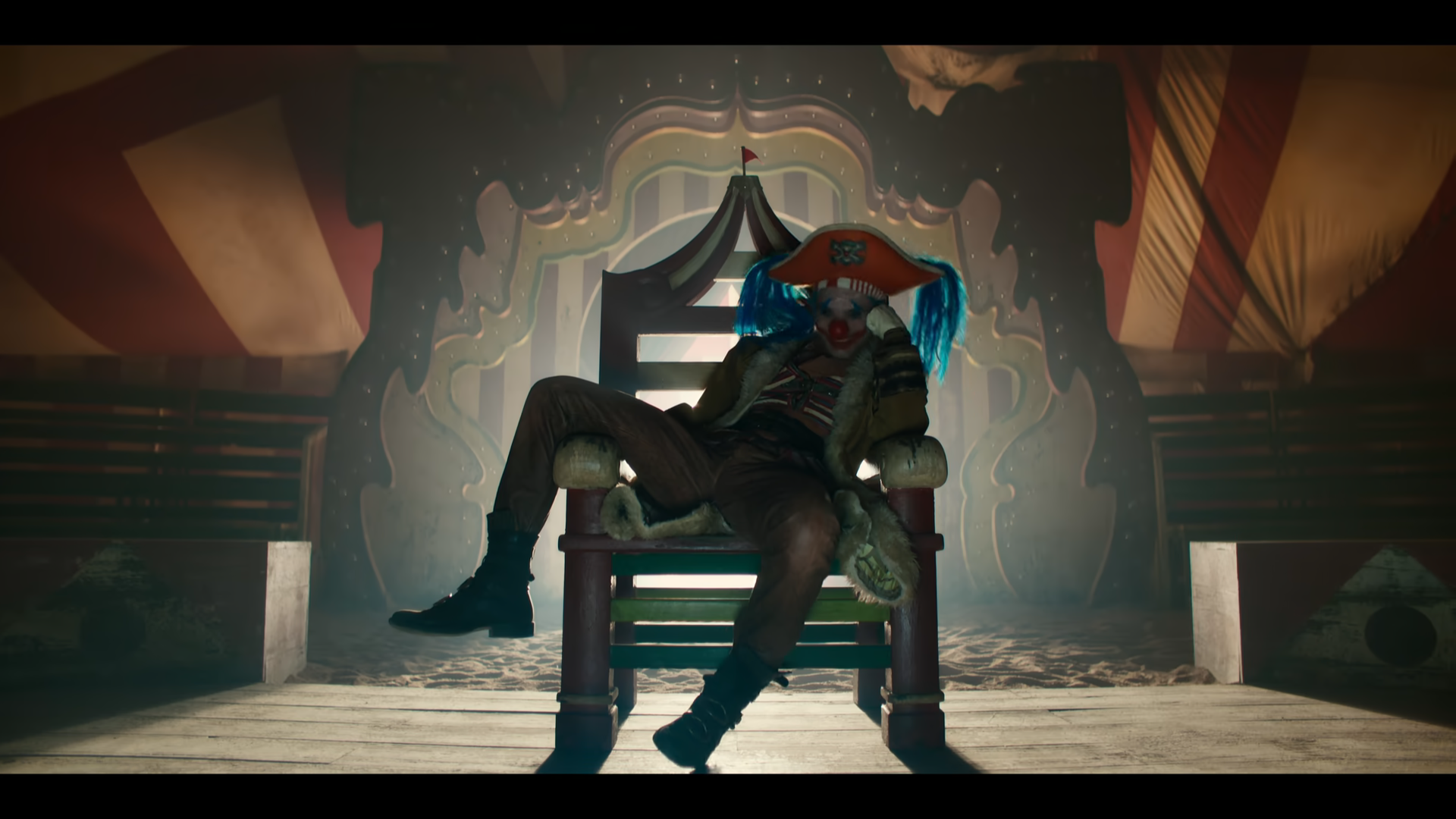The ONE PIECE live-action is making history as an anime/manga adaptation, and I’ve had the pleasure to speak with one of the directors of photography for the series, cinematographer Nicole Hirsch Whitaker, ASC. Besides being surprised that she knows about my birth country (Montenegro) and even has family nearby, we talked about the production of the ONE PIECE live-action, touching on the staff, cast, challenges, fun, and a lot more! She was the director of photography for the first two episodes of the series, and you can read on for the full interview.
Q: We mainly focus on covering anime and manga, not so much on live-action. To start, can you explain to our fans what exactly was your role as the director of photography for the first two episodes in the ONE PIECE live-action?
A: When I was approached to work on this show by Mark Jobst, the director, he and I had done another show together called Jupiter’s Legacy. That was also a manga. Basically he came to me to talk about how we were going to adapt this incredible
IP into something live action. He had obviously thought about it a lot, and then we just started, sending each other ideas, sending each other imagery, talking about different films and different shows that had done a good job, others that hadn’t done a good job. Kind of what we wanted to do moving forward. So basically my role was just to support the storytelling that he wanted to do, and the writing and the script, and come up with a really fun way to shoot the show, which we did. I was really excited.
Q: So ONE PIECE is really a crazy world. How did you approach translating that to live-action cinematography, and how did you adapt your cinematographic techniques to capture the soul of the unique locations, such as the Windmill Village, Buggy’s circus or Roger’s execution site at Loguetown?
A: I’ll talk first about just trying to find a style. That was something that the fans would relate to in terms of the way that the anime is animated and the way that the manga is drawn. We were just very cognizant of the fact that we wanted to make sure that we weren’t alienating anybody, but also that the most important thing was the story. It doesn’t matter – you can pick the right lenses, you can light something beautifully, but if you don’t relate to the characters, nobody’s going to care, right? So that was the most important thing. And also, we were working with actors. Some who would be cast not only because they are great actors too, but also because they would be relatable. A lot of people have been watching and following the franchise for 25 years. So to find a real life Luffy, a real life Nami, a real life Zoro, and across the board, was a big challenge. I thought Marc [Jobst], Steven [Maeda], Matt [Owens] and everybody involved with the casting did such an amazing job. And the actors are incredible too. So you know, a lot of it was just us finding the language that people could relate to, that wasn’t also too over the top. We wanted to make sure that it was something that was correct for the story.
In terms of the locations and the different sets. The Gold Roger set, that was all on blue screen, I’m sure you can imagine. They are in this sort of Italy type world, and we shot that in a castle so that the actors would still actually have buildings around them. So part of the set is actually there and part of it is blue screen. Then, Buggy’s tent was an incredible set that Richard designed. It was made from old sails that were then aged and sewn together. It was just a beautiful, beautiful space. And it was really fun to work in. It was big, and it really felt like a giant circus tent. I mean, it was real. It was a true size of a circus tent. So you would walk in there and the scope of it was amazing. And we lit it so that there was no lights on the floor, so that we could chase the actors with a board, or not. So that was really fun. We had a lot of time to design that, which was really, really fun.
And the Windmill Village was also an incredible set. I think it took them six or seven months to build. They built it in a tank. The whole thing was like, there was nothing where there wasn’t something that you could actually shoot. It was all real. That was the real sky. Obviously, there was blue screen around the entire tank. Because, we were shooting in Cape Town, and the studio was right next to a giant freeway. So you know, right behind the Windmill Village, there was a giant freeway [laugh]. Having something like that, something that’s real. That Colton, who played the young Luffy, could run around, and really jump on things and climb under things. It really gave us a lot of work with as filmmakers, which is great.
Q: Lighting often plays a crucial role in setting the mood of a scene. What was your focus in that regard, particularly for the Buggy’s circus scenes?
A: Well in terms of Buggy. We have this sort of a story thread, through-line that he starts off. And you see him, and he’s a circus ringmaster. You don’t really know that everybody’s been captured unless you know the manga or the anime. So you sort of see him, and you just think he’s this crazy looking guy who’s obviously evil. But, we wanted to start it off that it was kind of, you know, bright and cheery and colorful. So we brought references about how many colors we were going to have in the beginning. Then slowly, as he starts to become obviously more evil, and Luffy becomes his prisoner and Nami and Zoro get captured, we slowly started to change the lighting to reflect that. So that was something that that Mark and I worked very carefully and very hard on, to make sure that that transgression and the transitions worked really well for for those scenes.
Q: How about the action sequences? What were the biggest challenges while covering the fast-paced action while maintaining visual clarity?
A: Yeah, the biggest challenge of this entire show was that we were shooting outside a lot and it’s much more difficult to control the light than it is to create it. So especially like in the big fight sequence in the yard, we shot that over 7 days, and trying to keep the light consistent when it’s summer time and it’s going from super low to super high, back to super low. We had a lot of overheads and just chased things around The stunt coordinators and my stunt camera operator worked really hard with me to figure that out as well. They rehearsed for months with the doubles and with the actors so that we could design things. One of the things that Mark and I really wanted to do was not have cutty stunt scenes. We wanted to have long fluid camera moves, which I think turned out great and it makes it so that you don’t feel like you’re being tricked. I think. You really feel like Axe Hand’s coming with his giant crazy arm and like coming at Luffy.
The actors did a lot of their own stunts as well. Nami [Emily Rudd] learned how to wield that stick. And obviously, Mackenyu is an amazing swordsman. I mean, he was able to do pretty much like 95% of his own stunts. And then, Iñaki, he’s super stealthy in real life and he was able to do a lot of the crazy gymnastic sea parkour stuff. So it was really fun. I mean, they had amazing stunt doubles as well, but it was really fun to work with the actors and be able to see their faces as opposed to having to cut around things or like, you know, having to, move their face or duck their head. So that was really exciting. And I think the stunts are appropriate. They’re not too long. They’re not gratuitous. They’re not just big, punchy sock ’em up scenes . They’re fun and they’re different. I Ioved Zoro’s first fight with with Mr. 7. I loved filming that. It was really fun.
Marko: I agree all the actors were great. Iñaki has some, like, young enthusiasm that’s perfect. My favorite was probably Buggy, but Mackenyu’s experience also clearly showed.
Nicole: Yeah, he was great. Really. He could not be more perfect to play that role. I think all of them, I mean, and it’s literally like, I met them, obviously. I spent time with all of them outside of work, and when they’re on set, you completely forget. And they just they were those characters. They were just so good. Really, really good.
Q: How did you go about balancing different tones to different types of scenes, for example between emotional, comedic, or dramatic ones?
A: You know, it’s funny as someone else asked me that question and they asked me if I approach them differently. Honestly, once you find a look for a film or a television show, you don’t necessarily really change anything in terms of the dramatic scenes versus the stunt scenes. Cause you want to have a thread that is the look of the show. So I don’t really change anything in terms of lighting. Obviously, camera is different. It was really important to us to not be bogged down with a lot of crazy tools. Mark would say, quite often like, just give me a a person and a camera and put all the cranes and everything away. Because a lot of times, you end up spending hours setting up a shot, you know, for one shot. And he felt like it was really important to just keep the momentum going. So if we did do anything really complicated, we tried to do it first thing. So we were set up before the actors came and then we could rip it away. And then get on with the day. So yeah, it was a fun way to work. It was definitely different, but it was exciting.
Q: Is there any one specific scene you could say was the most difficult or challenging to capture the way you wanted?
A: I would say the fight in the yard. I was really worried about that just because of the lighting. I had worked with my colorist, Mike Katzer, who’s a technical here in Los Angeles. I told him what my challenges were going to be, and I sent him a lot of reference and he came up with a really beautiful LUT that we then were able to shoot in high sun a lot more than I thought we would have been able to, just because it was low contrast. So it really kept the highlights down and the shadows lifted. So that when there was too much contrast, I didn’t have to worry so much. So that was a huge plus. Like, I was really scared. Because you see things that are shot in high sun and people – you can’t even see their eyes. We flew overheads over some things, but we couldn’t do it over everything. So because we saw the sky a lot, it was definitely tricky, but I’m really happy with the result. I think it’s a couple shots where I’m like “oh God, that wasn’t there” [laughs]. But they’re so fast, you know. On the day, you just have to remember that they’re fast. And sometimes you have to compromise a little bit. You know not everything can be exactly the way you want it. And I I’m really happy with the result, but that was a challenge, yeah.
Q: Similarly, what scene would you say you had the most ‘fun’ creating?
A: Ohh Buggy’s tent [laughs]. That was so much fun. I mean, that’s the most fun I’ve ever had lighting for sure. It was just amazing.
Marko: Yeah that looked amazing. I think my favorite scene was probably Buggy’s introduction. When he came out and the spotlight wasn’t on him. So the way he just looked over at Mohji disappointedly without actually over-explaining something obvious like “oh you missed the spotlight.” I found it really funny, and the scene looked incredible. That may have even been my favorite scene in the series.
Nicole: I love that scene too. That was really fun. I mean, that was the first time we shot Buggy. You know, we had a huge crew, but that day, it was very, like, being on a theater set. And it was just Mohji, and Jeff [Ward] as Buggy, and the director and I, and my dolly grip and my gaffer. Like I said, everything was from the ceiling except for this one light that was attached to the dolly that could uplight him. I just remembered, when he sat in the chair and he threw his leg over the chair. and the spotlight came on, and the lights came on I just was, like, I got goosebumps. Because, Buggy to me was, in a way, he was scary because he was also the first prosthetic that we had on the show. We were supposed to have one other one in episode 2 that we ended up not using so, in my episodes, there were no prosthetics except for buggy. Then, you know, it came later with the Fishmen and all that stuff. So yeah, I loved that too, I thought that was super fun.
Q: ONE PIECE has a huge fan base. As we know, live-action adaptations of anime/manga have generally not been received that well. Did you feel the pressure from the expectations, especially following all the build-up prior to the release of the series? And what about now that it’s out and it received an incredible reception from the fans?
A: Yeah, for sure. I mean, we’re trying to appeal to old audiences, new audiences. You know everything from the writing to the casting to the way that we shot it was going to be picked over with a fine tooth comb. And I I knew that there were going to be people that didn’t like it and people that loved it because you can’t please everybody. And there’s people who just don’t want you to re-do anything, you know. They don’t want you to ever take any IP or ever do sequels, and I totally respect that. They love the original versions, and that’s all they want, and that’s fine. But the fact that we’ve gotten such great response from the community that is the ONE PIECE community makes me so happy and, obviously having Oda’s stamp of approval is huge.
Marko: Yeah, it was really great. The majority of the feedback I’ve seen has also been positive. Obviously not all of it, but, really, it seems like the general opinion is great.
Nicole: Yeah, yeah, and even if something’s wonderful, sometimes it’s just not the right time. There’s so many factors to things getting well received. So, there been so many great shows that people just didn’t see or they disappeared. And Netflix really had a lot of confidence in this project, so they really went out on a limb and had big events. I mean there’s billboards everywhere, all over Los Angeles. So I think that, just their confidence level also made a big difference in terms of the support for the show. And all of you guys wanting to talk about it. So it’s been, it’s been really fun.
Q: Finally, what message would you send to all the ONE PIECE fans who are either in the middle of watching the series or are yet to get started?
A: I would just tell them just to have a good time. Don’t put too much thought into it in terms of the back story or what’s going to come. It’s just really, it’s a fun ride. So just sit down and pop some popcorn and have a good time [laughs]. And it’s like, it’s really fun. It’s really fun to have worked on something that you can tell people to watch that’s going to make them happy. And I love that about the show. I mean there’s listen, there’s lots of dark story points. None of these characters come from happy backgrounds. They’ve all had tough lives. But I think that the fact that it’s – the show is about family in the end. That was what was really important, so I hope everybody can enjoy it.
Big thanks to Nicole for her time to do this interview. I really had fun and it was incredible hearing directly from someone who had such a big role in the ONE PIECE live-action. The series is currently streaming exclusively on Netflix.





Participate In Discussions